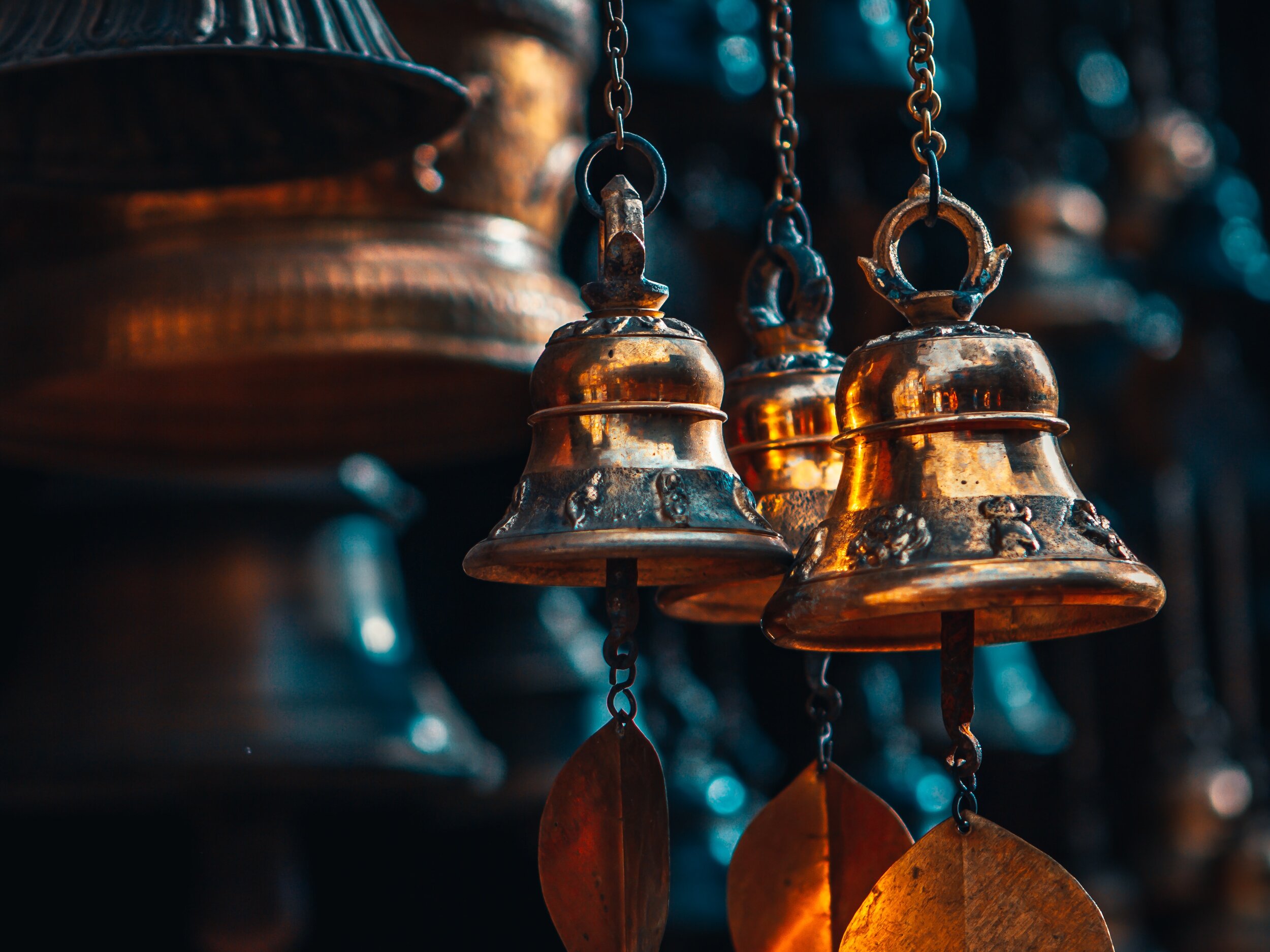Everyone knows how fun it can be to sing along with your friends to your favorite songs on a long car journey. Right now, probably happy memories of fun road trips pop into your mind. But recently, also many yoga studios have discovered the benefits of singing, chanting and sharing together. In the yogic world, a form of gathering where you come together to sing is called kirtan, or yogic chanting. Kirtan is traditionally an ancient practice that originated in India but has gained popularity in the western world as well in the last years because of its many benefits.
What is Kirtan?
A kirtan is a sort of singing circle or gathering where people get together to chant mantras and other songs and poetry in a call-and-response format. The word kirtan comes from Sanskrit and means either ‘narrating of an idea’ or ‘story or to praise the divine’.
The ancient practice of kirtan is almost as old as the practice of yoga. It dates back to 2500 years ago and was originally practiced as a way for the yogis to communicate with God, by chanting the names of the divine Hindu gods and goddesses, for example Shiva, Durga, Ganesha, Ram, Kali and Krishna. In this respect, kirtan belongs to bhakti yoga, the yoga of devotion to God.
Normally, every kirtan has a chant leader, also called kirtan walla, who is singing out the words which the audience then repeats back. Traditionally, a kirtan is accompanied by instruments such as the harmonium (a keyboard instrument of the organ family that has similarities with an accordion), different drums, bells and sometimes also a guitar.
Kirtan songs and mantras are originally written in ancient Indian Sanskrit. Sanskrit, a very holy language, has a very strong energetic and vibrational influence.
Mantras are the yoga of sound. A mantra is a word or phrase that is repeated until it slips into the chanter’s consciousness. Mantras are sacred sound formulas with a specific focus and energy. The word mantra means “to guide and protect the mind“. By repeating mantras, practitioners experience inner peace, calmness, connection and non-thinking.
When chanting the words of the mantras and songs, they create a vibration in the body, which affects or mind, emotions and spirit. It is useful to know the Sanskrit lyrics that are sung within the songs of a kirtan, however, the body responds to the them either way. No matter if we know the lyrics we are chanting or not, our body’s intelligence is able to comprehend the vibrations of the chants, even though our thinking mind is not able to understand the words.
What to expect during a kirtan?
Traditionally, a kirtan gathering lasts a few hours, and each mantra or song can last between 10 minutes to half an hour. After every song, a mindful silent pause follows, to integrate the effects.
In a kirtan circle, everyone normally sits on the ground or a meditation pillow. The kirtan leader(s) sit in front to be visible for the whole group. Often, they slow down or speed up the pace of the songs or building the song up to a height to enhance the spiritual benefits of the kirtan. It is not unusual that a kirtan ends in ecstatic whirling and dancing.
The whole gathering consists of music-making and chanting the mantras together in a call-and-response manner. Because of this style, it is not necessary to know the lyrics beforehand. Everyone is encouraged to sing along in the kirtan, and the aim is to create a collective voice, where one doesn’t hear his or her own voice anymore.
No experience is needed to join a kirtan, it is a beautiful and group building experience and the call-and-response style makes it very accessible for everyone, no matter if you know the lyrics of the songs and mantras or not.
The benefits and effects of kirtan
The benefits of this ancient sing-along practice are many and its benefits are best experienced directly during a kirtan. However, the biggest benefit and effect of kirtan is the creation of connection. By chanting and sharing in a group or circle, we are connecting deeply to the others around us, but we are also connecting to our own hearts and souls and to the present moment.
When we sing together with others, especially in a kirtan setting that aims at forgetting the individual voice and sharing the collective voice, we create community. During a kirtan, we share the breath, the space and the voice, merging into one big being. Singing brings us closer together, bridges our differences and creates community. By reciting the ancient mantras, we raise our collective vibration and vibrate on the same frequency. Creating community is such a vital and essential part of being human, one that is more and more forgotten in our digital age and the beautiful practice of kirtan brings this forgotten wisdom back into our consciousness.
The songs and lyrics open our hearts to the divine soul and allow deep healing from the inside. Many kirtan students feel blissful and ecstatic or energetic after a kirtan circle. The music lifts us up and has the power to heal our emotional and even physical baggage, which we are carrying within us.
If you find it difficult to meditate to be in the present moment, music can assist you. In a kirtan circle, we also chant to be in the here and now and let go of our thoughts. One of the most famous kirtan leaders, Krishna Das, says he always starts chanting to calm down the monkey mind. Whenever disturbing thoughts enter, he just sings to come back into presence and the thoughts will fade away. The repetition of the words sung in kirtan enhances our focus and clears our minds from daily chatter.
Do you want to experience the benefits of a kirtan yourself and connect with others through the power of music? Come join us and sing along in our next Kirtan Circle here at The Conscious Club which we host every first Friday of the month.
Got Curious? Check out the upcoming Kirtan Circles we have coming up!
Written by Clara Malzer













